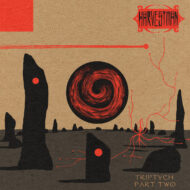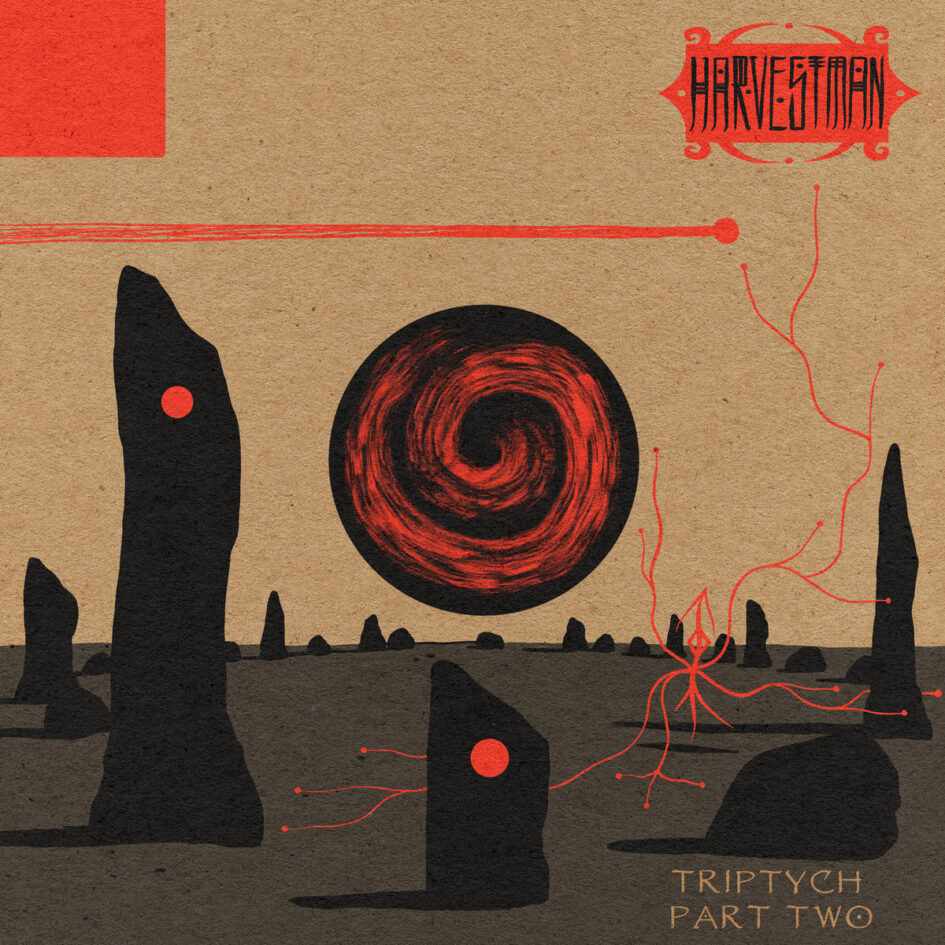 Earlier in the year, I wasn’t quite quick enough off the mark when Harvestman – Triptych Part One cropped up on the weekly email, and even if I really only wanted it because of the wildly out of place list of folk/space-rock influences (Fairport, Steeleye, Hawkwind, Tangerine Dream, amongst others) I was a little bit sad I didn’t get to tackle it. But Mr. Steve Von Till (better known by way of Neurosis) being who he is, and because this is a multi-instalment work that seems to be being released in quick succession, I haven’t had to wait long to have a crack at Triptych Part Two.
Earlier in the year, I wasn’t quite quick enough off the mark when Harvestman – Triptych Part One cropped up on the weekly email, and even if I really only wanted it because of the wildly out of place list of folk/space-rock influences (Fairport, Steeleye, Hawkwind, Tangerine Dream, amongst others) I was a little bit sad I didn’t get to tackle it. But Mr. Steve Von Till (better known by way of Neurosis) being who he is, and because this is a multi-instalment work that seems to be being released in quick succession, I haven’t had to wait long to have a crack at Triptych Part Two.
First thing I’m going to put out there is that the influences listed in the press blurb are…subtle to say the least. If you’ve come here expecting anything even vaguely approaching a straightforward retread of Liege & Leaf, this is not for you. If, on the other hand, you’re looking for a sparse, somewhat proggy, psychedelic, atmospheric experimental album, with just enough going on to keep it interesting, and spindly, whispery veins of all of the above influences running through it like a seam of rock?
Well in that case, come on in. You’ll find a fair bit of Triptych very much to your liking. This isn’t so much an album in the traditional sense, as a soundscape that slowly and ponderously takes you places, but only if you really give it your undivided attention. If you’re familiar with the likes of Terry Riley and other experimental pioneers, that’s more where the bulk of this album lands. It reminds me a little bit of a couple of albums I reviewed last year – not in any real musical sense, but in terms of the sort of album this is: Xibalba by Ershetu, and The Nature Out There by Kinit Her.
Xibalba – much like Triptych – isn’t really an album in traditional sense of the word – it’s more an aural recreation of a specific experience (Mayan death rites), and is subtle enough that the joys, intensities, and – frankly – the point of it all can pass you by completely if you’re not giving it your full attention. In a similar way, there’s little enough going on here that it fades into the background really, really easily, which isn’t great when you’ve got to write a review of it and are easily distracted (guilty as charged). However, both albums come into their own when you stop trying to do anything around them, and listen to them with an empty(ish) mind, because that’s when all the detail and atmospherics really come to life. For me, that puts them in the same territory as the aforementioned Terry Riley, but also the weirder end of Spacemen 3, Kronos Quartet, the instrumental, soundtracky end of Mogwai: bands and music that is best enjoyed in a dark, quiet room, eyes closed, with no interruptions or distractions. Or, alternatively, long train journeys, where you know you’re not likely to (or don’t want to) sleep, but you want something to close your eyes and zone out to; this is that sort of album. I personally don’t listen to such things all that often (hence my reference pool is a little limited), but they definitely have a time and place in my music collection, and Triptych Part Two is as good as example of the art as any I’ve come across. The press blurb also describes it as a “dream diary” that narrates a journey through a peculiar, multi-layered landscape that is both familiar and not so, ancient and novel, which is a pretty good description of where my brain goes when left to its own devices with this album.
Talking of things that I don’t necessarily listen to a whole lot, but that absolutely have their place within my tastes, the other album this reminded me of was The Nature Out There by Kinit Her. Which is odd because in a lot of ways, the two are opposites. Where Triptych is all threadbare meandering soundscape, Nature is the musical equivalent of sticking a mic in the ground at the centre of an elaborate pagan rite, and releasing the resulting bedlam as an album. But the reason my brain linked them up is that while reviewing Nature, I found myself wishing that someone had made a Triptych-style album out of it. That is to say, pulled a few central or random threads out of the chaos and let them develop slowly in their own space, rather than being buried in the whirling mass. And having spent enough time listening to both to review them, I appreciate them both as different extremes in the same space, with one being too much in a lot of ways (but still fun), and the other just barely having enough happening to keep my interest. Which is possibly where it may fall down with some listeners – if you’re not paying close enough attention, it’s all too easy to miss the entire point of this album.
Which is a shame, because while at first glance there doesn’t seem to be a lot going on here, Triptych Part Two is an album that really comes alive when you give it time and space to get its claws into you, and take you on a circuitous journey through a space that, really, you’ll have to experience for yourself.
(7.5/10 Ellie)

Leave a Reply